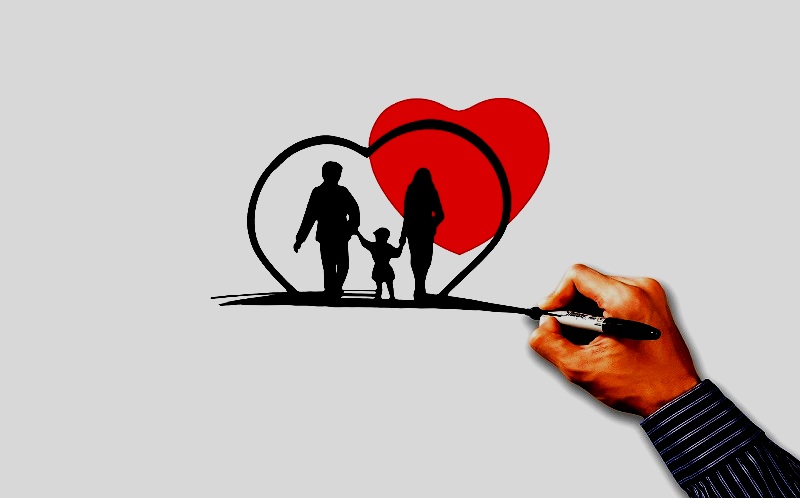You would do anything for your children. You would take time off work if they were home sick, drive them to soccer practice, help them with their homework, and make sure they’re safe coming home after a sleepover. Your children can feel like they are the whole world to you, and nothing feels more important than these growing lives you’re responsible for.
Their lives are worth more to you than your own, so why should it be only you who has life insurance and not your little one? There are a few benefits to owning a juvenile life insurance policy that should be taken into consideration, and indeed, many people are taking out policies. In 2016, 40% of families who had children under 18 in the United States owned life insurance policies for their children under a combination of individual and group policies.
There are three options for juvenile life insurance:
1. Juvenile permanent life insurance:
This policy functions much like an adult’s policy, where the coverage is permanent on the condition that premiums are paid, and grows in value year by year. This is a whole life policy that pays a lump sum in the case of a tragedy, and is owned by a parent or guardian until the child turns 18 and assumes ownership. These types of plans typically cost somewhere around $4,500 to $5,000 per year.
2. Juvenile term life insurance:
Some individual adult policies offer units of coverage for a set amount tacked onto their insurance costs. As an example, the fees may only amount to a few dollars a year per thousand dollar unit.
3. Juvenile group life insurance:
Some employers offer this option through their group life policies, but the option is generally attached to your employer and cannot be taken with you if you change companies.
Policyholders can benefit in a number of different ways. In the event that your child does die due to an unfortunate accident, the policy would cover any associated funeral expenses. This is, of course, far less likely to occur as a child than as an adult, and the likelihood of actually requiring such a need is low. Most policies remain untouched by the time a child turns 18, and as a result, the life insurance policy could be used as an investment strategy to save for a child’s future.
There is also the consideration that life insurance costs more and more as you get older. As you age and your body needs more maintenance to continue functioning, it will cost more to be insured with the greater risk associated with your death. There are some cases where you are simply uninsurable as time goes on, as some are simply too great a risk for death. If a person is insured at birth, they don’t have to go through that possible rejection, they are already covered under a plan. Term insurance also occasionally carries the possibility of being turned into a permanent plan without requiring the usual underwriting.
Policies could also come with a promise that regardless of what is happening in the financial markets, your juvenile policy will continue to accumulate value. In a time where economic uncertainty may make investment problematic, a life insurance policy may be a clever way for families with disposable income to ensure some of their money is secure.
These might all sound like excellent opportunities, but the reality is, those who actually need a policy like this are fewer than what might initially be considered. Think about what a life insurance policy is meant to achieve. This type of policy is generally supposed to assist in easing the economic consequences of death in adults, as the loss of income can be a critical blow to a family’s ability to stay afloat. The loss of a child is not economically driven, it’s emotional.
Complete loss of life in a child is rare. Children are sometimes susceptible to being gravely ill, but even this is covered by health insurance and not life insurance. If the child eventually succumbs to their illness, their life insurance policy would be able to assist in paying for the resulting hospital bills, but even those would be lower if the money was instead invested in a good health insurance policy instead.
The reality of the situation is that a life insurance policy is only helpful to the child as a means of securing a policy. As a result, it might be a good idea to invest early if your family has a history of medical problems and conditions that might make your child more difficult to insure later. Otherwise, while it may seem as though you are investing in a child’s life by purchasing life insurance, you really only see the benefits after death, and at that point they aren’t for your child at all.
Juvenile life insurance may be a tempting option for a lot of people, and under the right circumstances, it can be beneficial to securing your child’s future. However, most people will likely find more use out of a good health insurance policy than life insurance, under the assumption that they would like to protect their child’s life rather than preparing for their potential death.
Consult with your insurance broker to see if juvenile life insurance is right for your family. Talk to your friends and neighbours to get more opinions, and do your own research. When it comes to protecting your family, it is always good to come prepared with the right tools and information. Insurance is all about looking to the future and giving you peace of mind. Should tragedy strike unexpectedly, you will be glad you put in the research now instead of worrying about what to do later.
Daniel Johnston is a content writer currently working for BreezeMaxWeb. He is a dedicated writer and loves everything about geology, having previously studied with the Gemological Institute of America in New York.



































